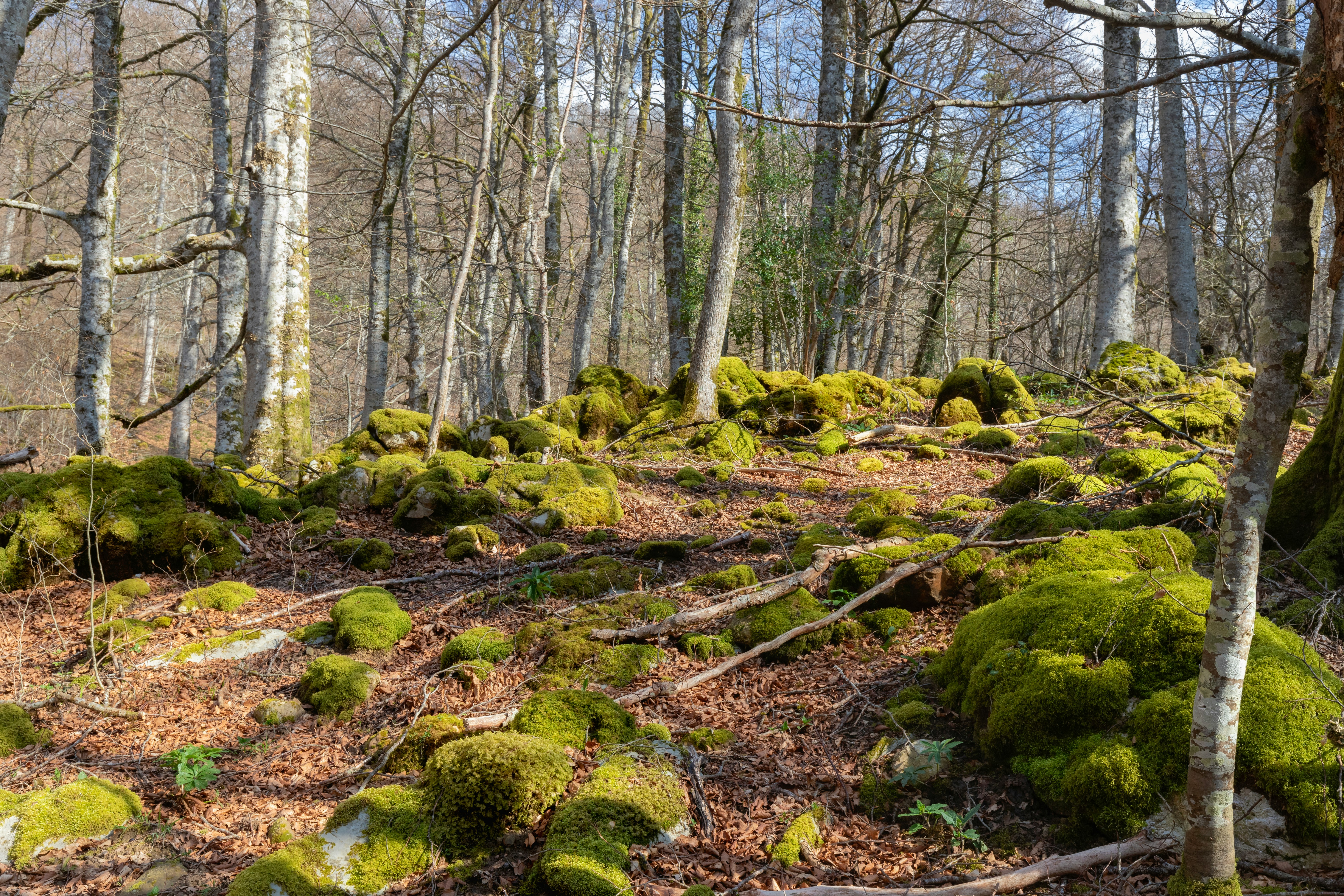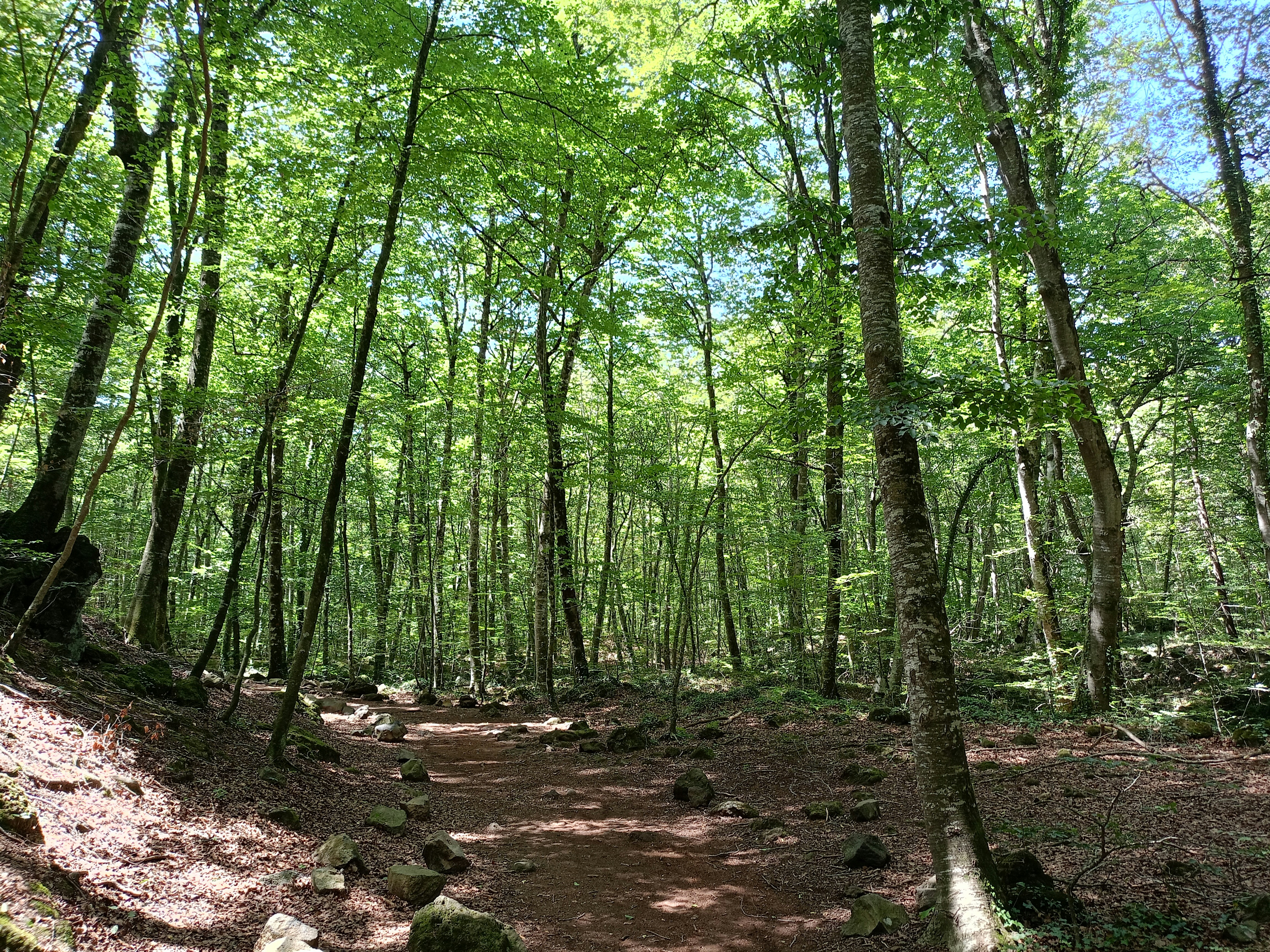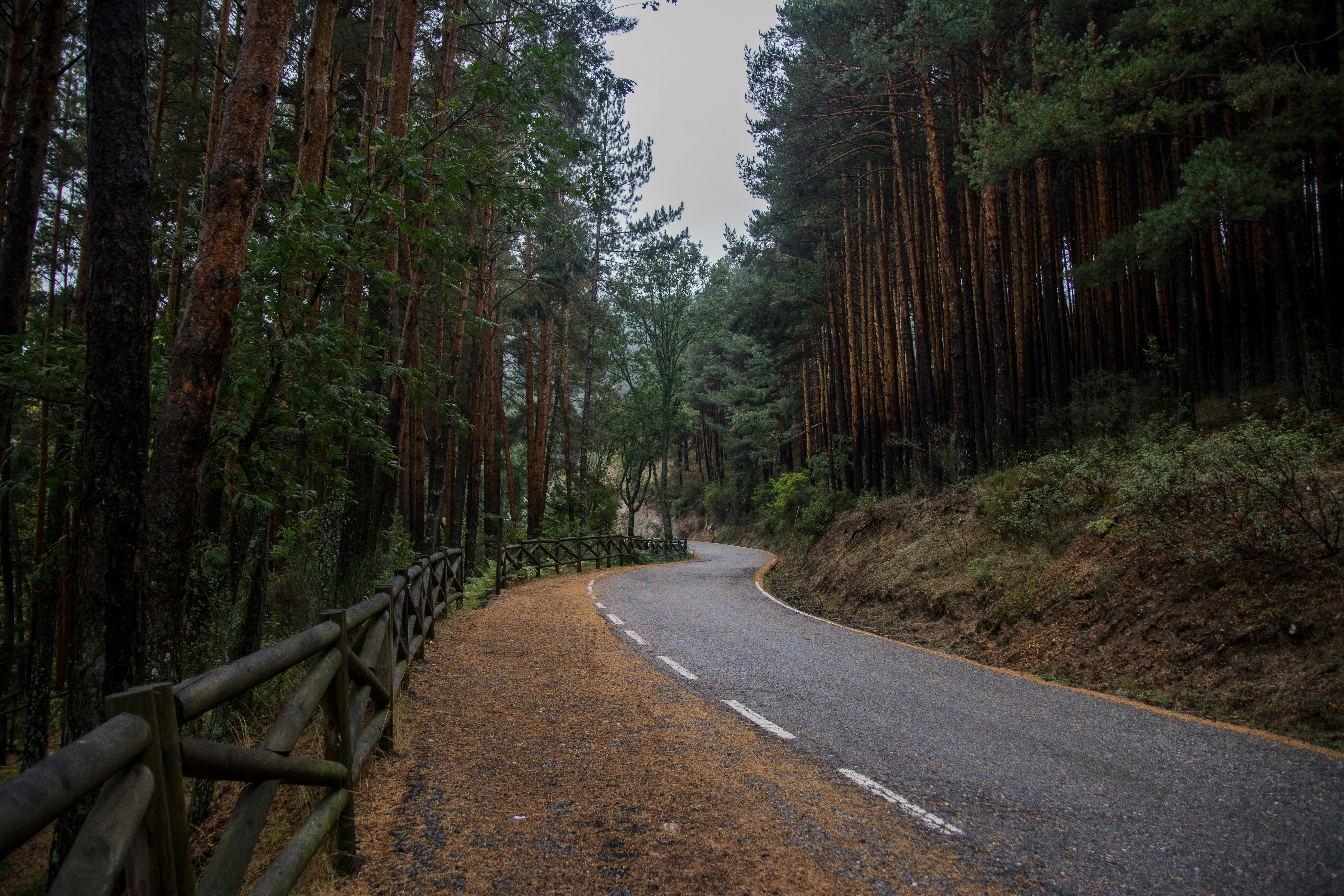Woodland Walks in Autumn

By Jose Luis Gallego, environmental communicator (@ecogallego)
Deciduous forests are among the most fertile ecosystems in nature, and the northern half of the Iberian Peninsula is home to some of the most beautiful beechwoods, oak and chestnut groves on the European continent. Their beauty transforms in accordance with the passing seasons: dormant in winter, exuberant in spring, refreshing in summer, and deeply melancholic in autumn, one of the finest moments of the year to enjoy these landscapes.
The geography of the Iberian Peninsula is dotted with numerous deciduous forests inviting us to enjoy an autumnal walk immersed in nature. So many, in fact, it would be impossible to list them all. The ones mentioned here are merely a small sample to which we should add urban woodlands whose sylvan protagonists are also decked out in autumn colours and aromas these days. The chestnuts in Madrid’s Retiro Park are a perfect example, offering an autumnal experience conveniently located in the very centre of the capital.

Retiro Park (Madrid)
One of the most famous Iberian forests is undoubtedly the Selva de Irati in the green heart of Navarra. When the forest is cloaked in thick dawn mist, the mood is almost too sentimental. It smells of rain, the dry leaves cover the ground like a damp carpet, and if you wear glasses, they fog up every so often. Jays are burying nuts – provisions for the winter – and the salamander – fond of the ubiquitous dampness – finds this an excellent moment to scamper along the paths showing off its spectacular black and yellow livery.

Selva de Irati (Navarra)
If we follow the Cantabrian coast, battered by the thundering sea, we reach the beechwood of Muniellos in Asturias. Steeped in deep shades of red, it is one of the few places where our forests’ greatest carnivore still roams: the brown bear. Slowly ambling along forest paths, this magnificent animal seeks out succulent beechnuts, the fruits of the beech tree. Halfway between an acorn and a chestnut, these trihedron-shaped nuts are rich in oils, allowing the bear to store up the necessary fat before retreating to the depths of a cave to hibernate until spring.

Muniellos Forest in Asturias
Autumn also offers a splendid display in the Catalan county of La Garrotxa, home to one of the peninsula’s most stunning beechwoods: La Fageda d’en Jordà. These days roe deer are scampering about the forest, blending into the ochre and golden hues of the landscape. Robins, recently arrived from northern Europe, fill the air with their song, and squirrels leap from crown to crown like acrobats before the astonished gaze of children, wrapped in anoraks and exploring nature on a school field trip. This time of year, there is no better outdoor classroom than the deciduous forest.

Fageda d’en Jordà (La Garrotxa)
The dormice have already settled into their dens in one of the old beech trees in the forest of Montejo de la Sierra: the beechwood of Madrid, nourished by the Jarama River. Montejo’s colliers and loggers claimed the forest was enchanted, home to fairies who bewitched passers-by with their song, luring them into their lairs where they fell victim to their spells and spent the rest of their lives as a frog or salamander in the depths of the forest.

Montejo de la Sierra (Madrid)
We could keep going with the elm groves in Alcarria, growing on the banks of a river of mineral water. Or the groves of willows, poplars, alders, and ashes in Riaza and Duratón in the Meseta Central. The chestnuts in Extremadura and Galicia, the walnut trees in the Pyrenees. As mentioned earlier, the list of woodlands where we can enjoy an autumn walk is almost endless – and as Charles Darwin himself noted, this is one of the finest activities a human being can indulge in.
